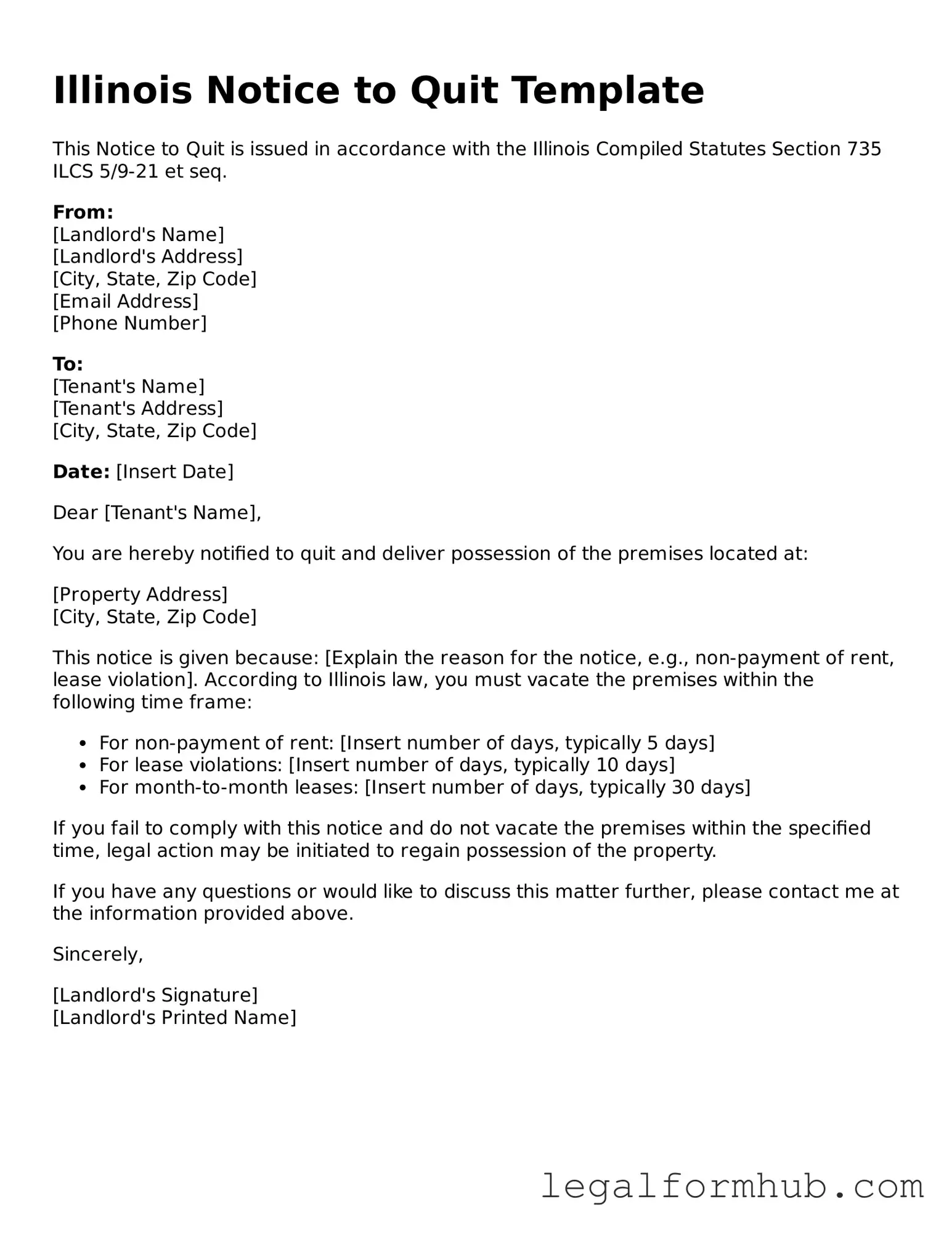The Illinois Notice to Quit form is similar to the Eviction Notice used in many states. Both documents serve as formal notifications to tenants that they must vacate a rental property. An Eviction Notice typically specifies the reason for termination of the lease, such as non-payment of rent or lease violations. It also outlines the timeframe in which the tenant must leave, often ranging from a few days to several weeks, depending on local laws.
Another document akin to the Illinois Notice to Quit is the Lease Termination Letter. This letter is often used by landlords to inform tenants that their lease will not be renewed at the end of the term. Like the Notice to Quit, it provides a clear indication that the tenant must vacate the premises. However, a Lease Termination Letter is usually issued at the end of a lease term rather than for cause, focusing on the expiration of the rental agreement.
The Three-Day Notice to Pay Rent or Quit is another document with similarities. This notice is specific to situations where a tenant has failed to pay rent. It demands payment within three days or the tenant must vacate the property. Like the Notice to Quit, it serves as a precursor to eviction proceedings, emphasizing the urgency of the situation.
The 30-Day Notice to Vacate is also comparable. This document is often used by landlords to terminate month-to-month rental agreements. It gives tenants a full 30 days to leave the property, allowing for a more extended notice period compared to the Illinois Notice to Quit. Both documents are intended to provide tenants with a clear understanding of their obligations to vacate.
The Demand for Possession is another document that shares similarities with the Illinois Notice to Quit. This legal notice is often filed in conjunction with eviction proceedings, requesting that the tenant vacate the property. It typically outlines the reasons for the demand and the timeframe in which the tenant must comply. Both documents aim to inform tenants of their need to leave, but the Demand for Possession is more formal and often used in legal contexts.
The Notice of Default is also relevant. This document is commonly used in mortgage situations but can be similar in structure and purpose to the Notice to Quit. It informs a party that they have failed to meet their obligations, such as making payments. While it primarily pertains to mortgage agreements, the concept of notifying someone of their default and the need to rectify it or vacate can be seen in both documents.
The Notice of Lease Violation serves a similar function as well. This document is issued when a tenant has violated specific terms of their lease agreement, such as having unauthorized pets or excessive noise. It notifies the tenant of the violation and often gives them a chance to remedy the situation. Like the Notice to Quit, it is a formal communication that can lead to further legal action if the issue is not resolved.
In addition to the various state-specific forms outlined above, the arizonapdfs.com/notice-to-quit-template/ serves as a valuable resource for understanding the Arizona Notice to Quit, ensuring that both landlords and tenants are informed about the necessary procedures and legal requirements when addressing rental agreements in Arizona.
Finally, the Notice of Intent to Vacate is comparable to the Illinois Notice to Quit. This document is typically used by tenants to inform landlords of their intention to leave the rental property. While the Notice to Quit is initiated by the landlord, both documents facilitate communication about vacating the premises, ensuring that both parties are aware of the timeline and expectations involved.
